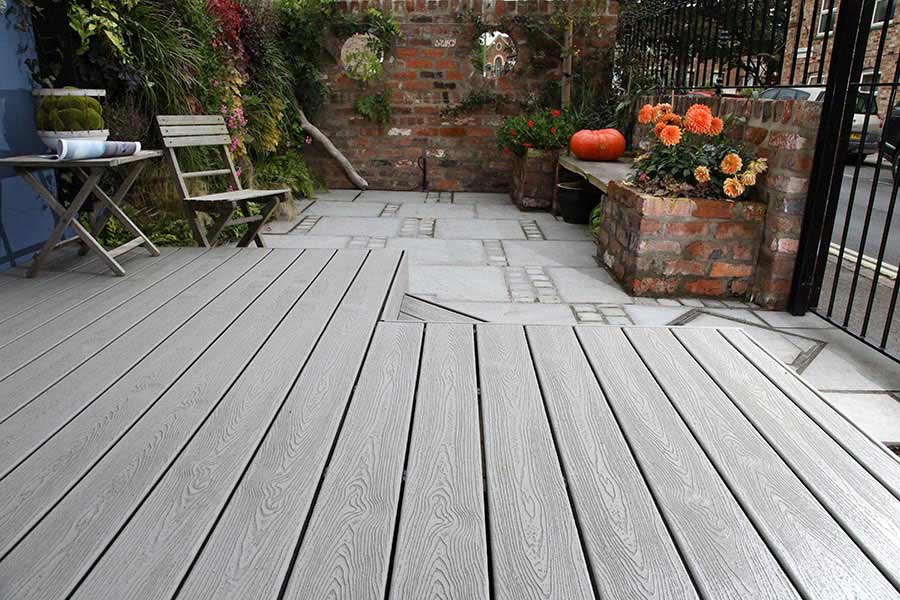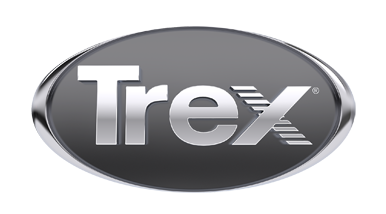The state of decking in 2017

As we come to the end of 2017, we’re looking back on another big year for decking. With a host of new products on the market there’s more choice for consumers than ever before, and the decking trend shows no signs of slowing. So what does the future hold?
Decking has been a growing trend in the UK for several years now, and 2017 was no different, with many homeowners choosing to use decking to add an extra dimension to their outdoor space.
So what is the current state of the decking market in the UK?
Trex is trending
The largest growth area of the decking market is definitely composite decking, which was predicted to grow from $1.7 billion dollars in 2015 to $3.09 billion by 2020. While much of this is being driven by the USA, the rest of the world has caught onto the trend and is now the fastest growing segment of the market.
Why is composite decking such a huge area of growth?
Well, it seems that many people are now seeing the benefits and the beauty of composite ranges like our own Trex Transcend collection. Trex is durable, hard-wearing, easy to maintain and looks fantastic, putting it top of the shopping list for many people choosing to add decking to their garden.
Many people who previously installed traditional timber decks are now seeing those boards come to the end of their life-cycle and beginning to require more and more maintenance. Where that’s the case, it is easier and often more cost-effective to replace the timber decking with a more durable composite option like Trex – a trend that’s driving demand.
A very positive side-effect of this trend is the growing number of highly-skilled and knowledgeable Trex installers available across the country – you can check out our TrexPRO programme to find a local installer.

Education, education, education
As composite decking continues to boom, we have seen the options available grow and grow, with more choice than ever available to the consumer.
However, it’s fair to say that not all composite decking systems are created equal and it is vital that installers and homeowners understand the benefits and pitfalls of each type of decking.
For example, do you know the difference between uncapped, fully capped and partially capped decking boards?
Capped and solid
Uncapped boards can soak in moisture, making them prone to mould or mildew which can affect the longevity of the decking. They are also more prone to staining and fading. But fully capped boards lack breathability and may separate over time, leading to delamination – that is, the cap lifting from the board.
Trex boards are capped on three sides, leaving the fibres free to breathe on the underside of the deck. The top and sides of Trex boards are weatherproof so they won’t stain or rot, and the shell is thermally bonded to the product core, so there is no way of removing it.
Similarly, customers can now choose between hollow and solid boards. Hollow boards can allow water to seep into the cavities, which may impact on the decking’s stability, causing issues with cracking over time.
Solid boards may be more expensive, but they have the performance edge. Trex’s solid boards are much more stable, and as moisture cannot get into the centre of the board, they are much less susceptible to splitting.
Sustainability
Finally, you probably know that one of Trex’s benefits is its sustainability – it is composed of 95% recycled matter, including plastics and wood fibres, which keeps these materials from being sent to landfill.
Selecting decking made from recycled materials rather than virgin material means you’ll be doing your bit for environment as well as improving the aesthetic of the outdoor space.
The expanding colour spectrum
Often we find that outdoor trends mirror what’s going on inside the home, and in 2017 that has certainly been the case for decking.
The past few years have seen shades of grey become the neutral colour palette of choice inside and out. With Trex, colours such as Island Mist and Gravel Path have proven to be the most popular – and with Trex’s long-term warranty against fading and staining, the colour will continue to feature for years to come.
However, we are starting to see a turning of the tide, with more customers requesting decking boards in lighter browns and beiges: we think Trex Transcend in Rope Swing is definitely one to watch for the future.







